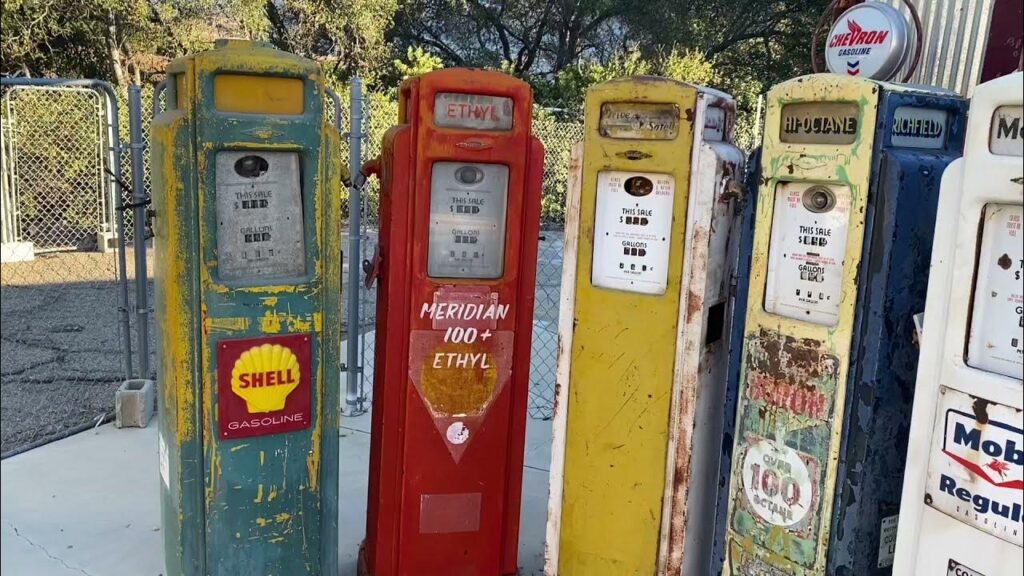Restoring old gasoline pumps has become a cherished endeavor for collectors and enthusiasts alike, as these iconic relics of Americana evoke nostalgia and serve as tangible links to our automotive past. The art of restoring these vintage pieces is not merely about refurbishment; it is a meticulous process that requires a keen eye for detail, an appreciation for historical accuracy, and a passion for preserving automotive heritage. Many collectors pursue these projects to breathe new life into pumps that once stood sentinel at bustling service stations, and in doing so, they contribute to the rich tapestry of automotive history. This article aims to guide both novice and seasoned restorers through the essential steps of the restoration process, providing valuable tips on sourcing parts, understanding the mechanics, and selecting the right finishes. Whether your goal is to create a stunning display piece for your garage or to restore a pump to its original working condition, these insights will help you navigate the challenges of restoration while honoring the legacy of these remarkable artifacts. Join us as we delve into the world of vintage gasoline pumps, exploring the techniques and tools necessary to revive these pieces of history for future generations to admire.
– Understanding the Value of Old Gasoline Pumps
Old gasoline pumps hold significant value, both as collectibles and as pieces of automotive history. Their aesthetic appeal often lies in their distinctive designs, which reflect the era in which they were produced. Collectors are drawn to the nostalgia associated with these pumps, as they evoke memories of a time when the automobile was a symbol of freedom and adventure. Furthermore, the rarity of certain models can increase their desirability and market value, making them sought-after items in antiquities and memorabilia circles.
In addition to their collectible value, old gasoline pumps can also serve as unique decorative elements in various settings, such as restaurants, garages, or personal collections. Their vintage charm often enhances the ambiance of a space, appealing to enthusiasts of retro design. When properly restored, these pumps not only preserve a piece of history but also contribute to the story of the evolution of fuel dispensing technology. Understanding the historical context and craftsmanship of old gasoline pumps can deepen appreciation for their value, providing insights into the cultural significance they represent in the automotive landscape.
– Essential Tools for Restoring Old Gasoline Pumps
A successful restoration of old gasoline pumps requires a well-equipped toolkit to address various aspects of the project. Key tools include a basic set of hand tools such as wrenches, screwdrivers, and pliers, which are essential for disassembling the pump and replacing worn or damaged components. Additionally, power tools like drills and grinders can expedite the removal of rust and paint, allowing for a thorough cleaning and refinishing process. A sandblaster may also be utilized for more extensive restoration needs, providing a clean surface for repainting and refitting.
Moreover, specialized tools such as a pressure gauge or flow meter can be invaluable for ensuring that the mechanical components of the old gasoline pumps function properly after restoration. It’s important to have cleaning supplies, including solvents and degreasers, to prepare the pump components for assembly. Lastly, safety equipment, including gloves and goggles, should not be overlooked, as working with vintage machinery often involves hazardous materials and sharp edges. With the right tools, the restoration process can transform old gasoline pumps into stunning displays of automotive heritage.
– Maintenance Tips for Old Gasoline Pumps
Regular maintenance of old gasoline pumps is crucial to ensure their longevity and functionality. One key aspect is to routinely inspect the pump for signs of wear and tear, particularly on seals and hoses, which can deteriorate over time. Keeping these components in good condition helps prevent leaks and ensures that the pump operates efficiently. Additionally, it is advisable to clean the exterior and interior regularly to remove dirt, grime, and any accumulated fuel residue, which can hinder performance and affect the aesthetic appeal of the pumps.
Another important maintenance tip for old gasoline pumps is to check the electrical components, including wiring and switches, to ensure safe and reliable operation. Corrosion can often build up in electrical connections, leading to potential failures. Lubricating moving parts, such as gears and pivot points, can help maintain smooth operation and reduce wear. Lastly, consider using fuel additives to help clean and protect the internal components, especially if the pump has not been used for an extended period. By adhering to these maintenance practices, collectors can preserve the value and functionality of their old gasoline pumps for years to come.
In conclusion, restoring old gasoline pumps can be a rewarding endeavor for collectors and enthusiasts alike. By following the tips outlined in this blog post—such as thorough research, careful sourcing of original parts, and attention to detail during the restoration process—individuals can not only preserve a piece of automotive history but also enhance the aesthetic appeal of their collections. As you embark on your restoration journey, remember that patience and passion are key components to success. Whether you aim to display your pumps as vintage decor or plan to participate in shows, your dedication will ensure these iconic artifacts continue to tell their stories for generations to come.






